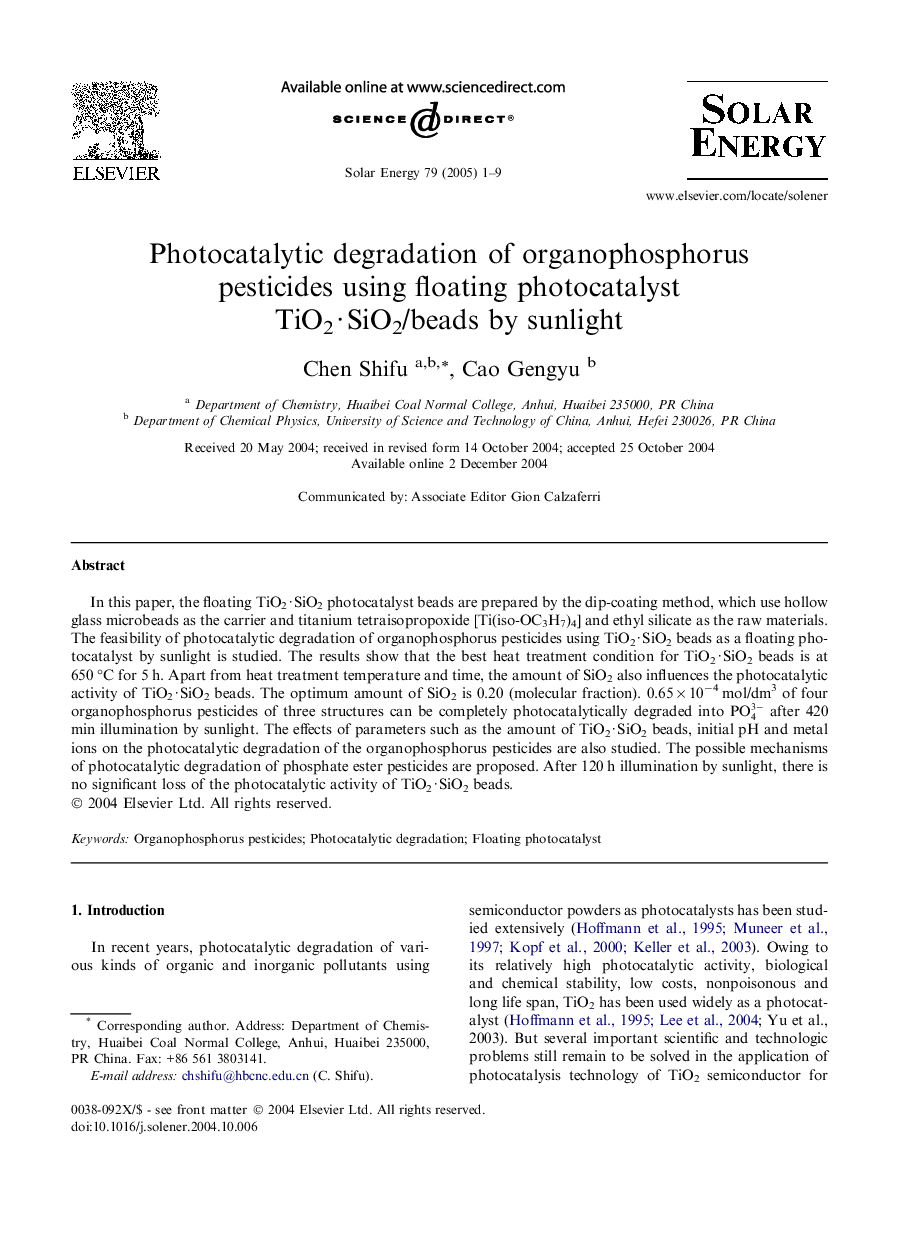| Article ID | Journal | Published Year | Pages | File Type |
|---|---|---|---|---|
| 10642960 | Solar Energy | 2005 | 9 Pages |
Abstract
In this paper, the floating TiO2 · SiO2 photocatalyst beads are prepared by the dip-coating method, which use hollow glass microbeads as the carrier and titanium tetraisopropoxide [Ti(iso-OC3H7)4] and ethyl silicate as the raw materials. The feasibility of photocatalytic degradation of organophosphorus pesticides using TiO2 · SiO2 beads as a floating photocatalyst by sunlight is studied. The results show that the best heat treatment condition for TiO2 · SiO2 beads is at 650 °C for 5 h. Apart from heat treatment temperature and time, the amount of SiO2 also influences the photocatalytic activity of TiO2 · SiO2 beads. The optimum amount of SiO2 is 0.20 (molecular fraction). 0.65 Ã 10â4 mol/dm3 of four organophosphorus pesticides of three structures can be completely photocatalytically degraded into PO43- after 420 min illumination by sunlight. The effects of parameters such as the amount of TiO2 · SiO2 beads, initial pH and metal ions on the photocatalytic degradation of the organophosphorus pesticides are also studied. The possible mechanisms of photocatalytic degradation of phosphate ester pesticides are proposed. After 120 h illumination by sunlight, there is no significant loss of the photocatalytic activity of TiO2 · SiO2 beads.
Related Topics
Physical Sciences and Engineering
Energy
Renewable Energy, Sustainability and the Environment
Authors
Chen Shifu, Cao Gengyu,
